Class 10 Geography ( Social Science ) Important Questions for Haryana Board (HBSE). Here You got Class 10 Geography Important Questions with Answer PDF and you also got important Map for Class 10 Geography. Question Answer of Class 10 Geography are Divided into Important MCQ, Important one Marks Questions, Two Marks Questions, Three Marks Question and 6 Marks Important Questions.
Class 10 Geography Important Questions
Q. 1 In which state of India Kaziranga National Park is located ?
(a) Assam
(b) Kerala
(c) Uttarakhand
(d) West Bengal
Ans. (a) Assam
Q. 2 Which one of the following is a ‘Rabi’ Crops ?
(a) Rice
(b) Millets
(c) Gram
(d) Cotton
Ans. (c) Gram
Q. 3 Under which of the following type of resource can tidal energy be put ?
(a) Replenishable
(b) Abiotic
(c) Human made
(d) Non-recyclable
Ans. (a) Replenishable
Q. 4 Hirakud dam is constructed on one of the following river :
(a) Krishna
(b) Mahanadi
(c) kaveri
(d) Godavari
Ans. (b) Mahanadi
Q. 5 Where Rio de Janeiro Earth Summit was held ?
(a) America
(b) Brazil
(c) China
(d) Japan
Ans. (b) Brazil
Q. 6 Which chemical compound is extracted from Himalaya Yew for Cancer treatment ?
(a) Taxol
(b) Warnis
(c) Haemoglobin
(d) Torento
Ans. (a) Taxol
Q. 7 In which of the following State black soil is found ?
(a) Rajasthan
(b) Assam
(c) Maharashtra
(d) Haryana
Ans. (c) Maharashtra
Q. 8 In which of the following State production of Manganese is maximum ?
(a) Orissa
(b) Rajasthan
(c) Tamil Nadu
(d) Gujarat
Ans. (a) Orissa
Q. 9 Which of the following is an important Rabi crop ?
(a) Cotton
(b) Wheat
(c) Paddy
(d) Jute
Ans. (b) Wheat
Q. 10 Which of the following is the best variety of Iron-Ore ?
(a) Haematite
(b) Magnetite
(c) Limonite
(d) Siderite
Ans. (b) Magnetite
Q. 11 Which of the following is fibre crop ?
(a) Coffee
(b) Jute
(c) Tomato
(d) Rubber
Ans. (b) Jute
Q. 12 Which of the following states is the largest producer of Bauxite ?
(a) Rajasthan
(b) Madhya Pradesh
(c) Odisha
(d) Gujarat
Ans. (c) Odisha
Q. 13 Which of the following is oldest petroleum producing state of India ?
(a) Gujarat
(b) Maharashtra
(c) Assam
(d) Goa
Ans. (c) Assam
One Marks Questions
Q. 1 Which type of natural resource is soil ?
Ans. Soil is Non- Renewable Resource.
Q. 2 What is rainwater harvesting ?
Ans. The Process of saving water of Rainfall for use is called Rainwater Harvesting. Rainwater Harvesting is mainly done in water scarcity areas.
Q. 3 In which state Mettur Dam is located ?
Ans. Tamil Nadu
Q. 4 In which state Bhilai Iron and Steel Plant is located ?
Ans. Chhattisgarh
Q. 5 In which State Kandla Sea Port is located ?
Ans. Gujarat
Q. 6 Name the soil having high water retaining capacity.
Ans. Alluvial Soil
Q. 7 What is National Park ?
Ans. National is the area which is protected by states for the protection and enjoyment of wildlife.
Q. 8 In which state Hirakud Dam is located ?
Ans. Odisha
Q. 9 In which state Vijaynagar Steel Plant is located ?
Ans. Karnataka
Q. 10 In which state Chennai Sea Port is situated ?
Ans. Tamil Nadu
Q. 11 Which crops are sown to increase the natural fertility of soil ?
Ans. Pulses and fodder Crops like jawar, maize
Q. 12 What is watershed development ?
Ans. The Development in the storing method of water is called watershed development. This is used in rain water harvesting.
Q. 13 In which state Sardar Sarovar Dam is located ?
Ans. Gujrat
Q. 14 In which state Salem Steel Plant is located ?
Ans. Tamil Nadu
Q. 15 In which state Kochi Sea Port is situated
Ans. Kerala
Q. 16 Write any one cause for land degradation.
Ans. Deforestation
Q. 17 What are reserved forests ?
Ans. Reserved forest are the permanent forest areas maintained for the purpose of producing timber and other forest produces.
Q. 18 In which state Rana Pratap Sagar Dam is located ?
Ans. Rajasthan
Q. 19 In which state Bokaro Steel Plant is situated ?
Ans. Jharkhand
Q. 20 In which state Visakhapatnam Sea Port is located ?
Ans. Andhra Pradesh
Q. 21 What is Mineral ?
Ans. A homogenous naturally occurring substance with a definite internal structure are called minerals. Minerals are found in Rocks.
Q. 22 Define Underground Water.
Ans. Water that is found inside of Land is called underground water. Water obtained from wells and tubewells is underground water.
Q. 23 What is Natural Resources ? Give two examples of it.
Ans. Everything available in our environment which can be used to satisfy our needs, provided, it is technologically accessible, economically feasible and culturally acceptable can be termed as ‘Natural Resource’. Example- Rocks, Metals, Plants etc.
Q. 24 Write down the four benefits of Forest.
Ans.
- Forest Gives us wood .
- Forest Maintain Water Cycle.
- Forest Provides Oxygen.
- Forest Provide Medicinal Plants.
Q. 25 What do you mean by fallow land ?
Ans. It is cultivable land which is cultivated once in two or three years. It is allowed to rest for one or two seasons to regain its fertility.
Q. 26 Write down the two uses of Aluminium.
Ans. Alumiium Used in Chemical Industries and Manufacturing of Electrical Goods.
Q. 27 What do you mean by sustainable development ?
Ans. Sustainable development means ‘development should take place without damaging the environment, and development in the present should not compromise with the needs of the future generations.’
Two marks Questions
Q. 1 What are Basic Industries ? Give examples.
Ans. Basic industries supply the products or raw materials to manufacture other goods such as iron and steel, copper , aluminum are some basic industries.
Q. 2 Write the advantages of pipeline in transportation of Petroleum and Natural Gas.
Ans.
- It is cheap means of transport in Inaccessible areas, dense forests, deserts and on high mountains.
- It rules out trans-shipment losses and delays.
Q. 3 Why are most of the Jute mills of India located in West Bengal ?
Ans. Jute mills of india located in west Bengal , mainly along the bank of Hugli river because of jute producing areas, inexpansive water tranport, supported by a good network of roadways, railways and waterways to facilitate raw material to jute mills.
Q. 4 What are the problems of Indian Railways today ?
Ans.
- Ticketless travel
- Unnecessary pulling of chains causing delays and disruption resulting in late running of trains.
- over crowding
Q. 5 Name four electronic goods producing centres of India.
Ans. Bangalore, Delhi, Mumbai and Kolkata
Q. 6 What is Mass Communication ?
Ans. Communication with a group of People is called Mass Communication. Example- Live Telecast of News, Live speech of Ministers etc.
Q. 7 What are light industries ?
Ans. Industries using light type of raw material and producing light goods are called light industries. examples- electronics industry produces fans, bulb, watches. etc.
Q. 8 Name any four International Airports of India.
Ans. Chhatrapati Shivaji International Airport ( Mumbai ), Indra Gandhi International Airport ( Delhi), Sri Guru Ram Dass Jee International Airport ( Amritshar) and GMR Hyderabad International Airport ( Hydrabad )
Q. 9 What is Agro based industries ? Give any two examples.
Ans. Industries that obtained raw material from agriculture produces is called agro based industries. Examples: Jute industry, cotton industry etc.
Q. 10 What is Potential Resources ? Give any two examples.
Ans. Resources that are available in particular area but not fully used is called potential resources. example- solar energy in Gujarat, Rajasthan and Wind energy in Rajasthan.
Q. 11 Which crops is known as ‘Golden Fibre’ ? What are its uses ?
Ans. Jute is known as Golden Fibre. Jute is used in making Ropes, bags, clothes and many other daily life products.
Q. 12 What is Mineral ? Define.
Ans. Geologists define mineral as a “homogenous, naturally occurring substance with a definable internal structure.” Rocks are combinations of homogenous substances called minerals
Q. 13 How many types are the Rocks ? Write their names.
Ans. There are three types of Rocks.
- Metamorphic Rocks
- Igneous Rocks
- Sedimentary Rocks
Q. 14 Write down the two main aims of Golden Quadrilateral Super National Highways.
Ans. The main aims of these Golden Quadrilateral Super National Highways is to reduce the time and distance between the mega cities of India.
Q. 15 Describe any two geographical condition for the growth of rice.
Ans. Rice requires high temperature, (above 25°C) and high humidity with annual rainfall above 100 cm.
Q. 16 What do you mean by biodiversity ?
Ans. Biodiversity or Biological Diversity is immensely rich in wildlife and cultivated species, diverse in form and function but closely integrated in a system through multiple network of interdependencies.
Three marks Questions
Q. 1 Distinguish between Anthracite and Bituminous Coal.
Ans.
Anthracite Coal
| Bituminous Coal
|
Q. 2 Distinguish between Natural Gas and Biogas.
Ans.
| Natural Gas | Biogas |
|
|
Q. 3 Distinguish between Metallic and Non-metallic minerals.
Ans.
| Metallic Minerals | Non-Metallic Minerals |
|
|
Q. 4 Distinguish between Commercial and Non-commercial energy.
Ans.
| Commercial Energy | Non-commercial Energy |
|
|
Q, 5 What do you mean by Multi-purpose project ?Give its three benefits.
Ans. A multipurpose project is that type of project which fulfils a variety of purposes at the same time, for ex- irrigation, generation of electricity, flood control, fish breeding, soil conservation with a single project of a Dam.
Q. 6 How do industries pollute the environment ? Write in brief.
Ans. Environmental pollution is becoming a serious problem for mankind. Industries have caused Air, Water, Land and Noise pollution. Sulphur dioxide and carbon monoxide gases cause air pollution. Smoke from chemical industries and burning of fossil fuels cause hazards. Bhopal Gas Tragedy is one example, Industrial waste causes water pollution. Wastes from Nuclear plants cause cancer. Industrial processes cause noise pollution.
Q. 7 Explain how rain water harvesting in semi-arid regions of Rajasthan is carried out ?
Ans. Rain water harvesting is a technique of increasing the recharge of ground water by capturing and storing rainwater. Many low cost techniques are used in semi arid areas like Rajasthan. In Bikaner, Phalodi and Barmer, underground tanks or tankar are used for storing drinking water. These are connected to the sloping roofs of the houses through a pipe. Rainwater is stored in tankas for three to five years. Rainwater or Palar Pani is considered the Purest form of natural water.
Q. 8 Road transport is more effective than rail transport. Explain in brief.
Ans. Road transport is more effective than rail transport in many ways:-
- Roads can be easily built and maintained.
- Roads can be built in highter slopes and high mountains while it construct railways over rough terrain.
- Roads are suitable for transporting light, perishable goods.
- Goods can be delivered right to the doorsteps of consumers.
Six Marks Important Questions
Q. 1 Describe the distribution of rice cultivation in India.
Ans. India is the second largest producer of rice in the world after China. Rice is grown in the plains of north and north-eastern part of India, coastal regions and the Delta regions. Tubewells and canals have made it possible to grow rice in areas of less rainfall such as Punjab, Haryana and western Uttar Pradesh and some parts of Rajasthan.
Q. 2 Describe the distribution of wheat cultivation in India.
Ans. Wheat is the second most important cereal crop. It is the main food crop in north and north-western parts of the country. The two important wheat -growing zones in the country are – the Ganga-Satluj plains in the northwest and black soil regions of Deccan. The major wheat producing states are Punjab, Haryana, Uttar Pradesh, Bihar, Rajasthan and some parts of Madhya Pradesh.
Q. 3 Describe the distribution of tea cultivation in India.
Ans. Tea cultivation is a plantation agriculture. Major tea producing states are Assam, hills of Darjeeling and jalpaiguri district, West Bengal, Tamil Nadu and Kerala. Apart from these, Himachal Pradesh, Uttaranchal, Andhra Pradesh, Meghalaya and Tripura are also tea producing states in the country. India is the leading producer as well as exporter of tea in the world.
Q. 4 Describe the distribution of sugarcane cultivation in India.
Ans. India is the second largest producer of sugarcane only after Brazil. The main sugarcane producing states are Uttar Pradesh, Punjab, Haryana, Karnataka, Maharashtra, Tamil Nadu, Bihar and Andhra Pradesh.
Q. 5 Which are the main means of Communication ? Explain their positive role in the Indian Economy.
Ans. Personal Communication and mass communication which includes television, radio, mobile, press, films, computers etc. are the major means of communication in the country. The Indian postal service is the world largest network in the world. It delivers parcels as well as personal written communication.
Q. 6 What do you mean by Globalization of Agriculture ? Write down its four advantages.
Ans. The Process of Sharing of Agricultural Seeds and Techniques with other countries is called Globalization of agriculture. After Globalization of agriculture, every country got benifits. Here are following advantages of globalization of agriculture.
(a) Major impact was with the introduction of high-yielding varieties of crops.
(b) This innovation, coupled with investments in infrastructure, expansion of credit, marketing and processing facilities led to a significant increase in modern inputs.
(c) Export of major agricultural commodities have been liberalized.
(d) The “gene revolution”, will also benefit the farmers by raising agricultural productivity.
Q. 7 Write a brief note on the impact of Globalization on Indian Agriculture.
Ans.
(a) Major impact was with the introduction of high-yielding varieties of crops.
(b) This innovation, coupled with investments in infrastructure, expansion of credit, marketing and processing facilities led to a significant increase in modern inputs.
(c) Export of major agricultural commodities have been liberalized.
(d) The “gene revolution”, will also benefit the farmers by raising agricultural productivity.
Q. 8 What is water scarcity ? Write in brief of its main causes.
Ans. Water Scarcity – many areas have shortage of water. This is called scarcity of water. In Rajasthan, women have to travel long distance to get drinking water after balancing matkas.
Scarcity of Water. According to Falken Mark, a Swedish Expert, water scarcity occurs when water availability is less than 1000 m3 per person per day.
Causes of Scarcity
(1) Low rainfall causes scarcity of water.
(2) Water scarcity occurs in drought prone
(3) Variation in seasonal rainfall.
(4) Over exploitation of water.
(5) Excessive use of water.
(6) Unequal access to water.
(7) Great demand due to growing population.
Map Important Questions
Locate the Position in Map
- Mettur Dam
- Hirakud Dam
- Rana Pratap Sagar Dam
- Sardar Sarovar Dam
- Bhilai Iron and Steel Plant
- Vijaynagar Steel Plant
- Salem Steel Plant
- Bokaro Steel Plant
- Kandla Sea Port
- Chennai Sea Port
- Kochi Sea Port
- Paradeep Port
- Visakhapatnam Sea Port
- Nuclear Power Plant
- Ukai Power Plant/Centre
- Narora Nuclear Plant
- Korba Thermal Power Station
- Digboi
- Corbett National Park
- Sunderbans National Park
- Periyar Tiger Reserve
- Kolar Gold Mine
Map Solutions
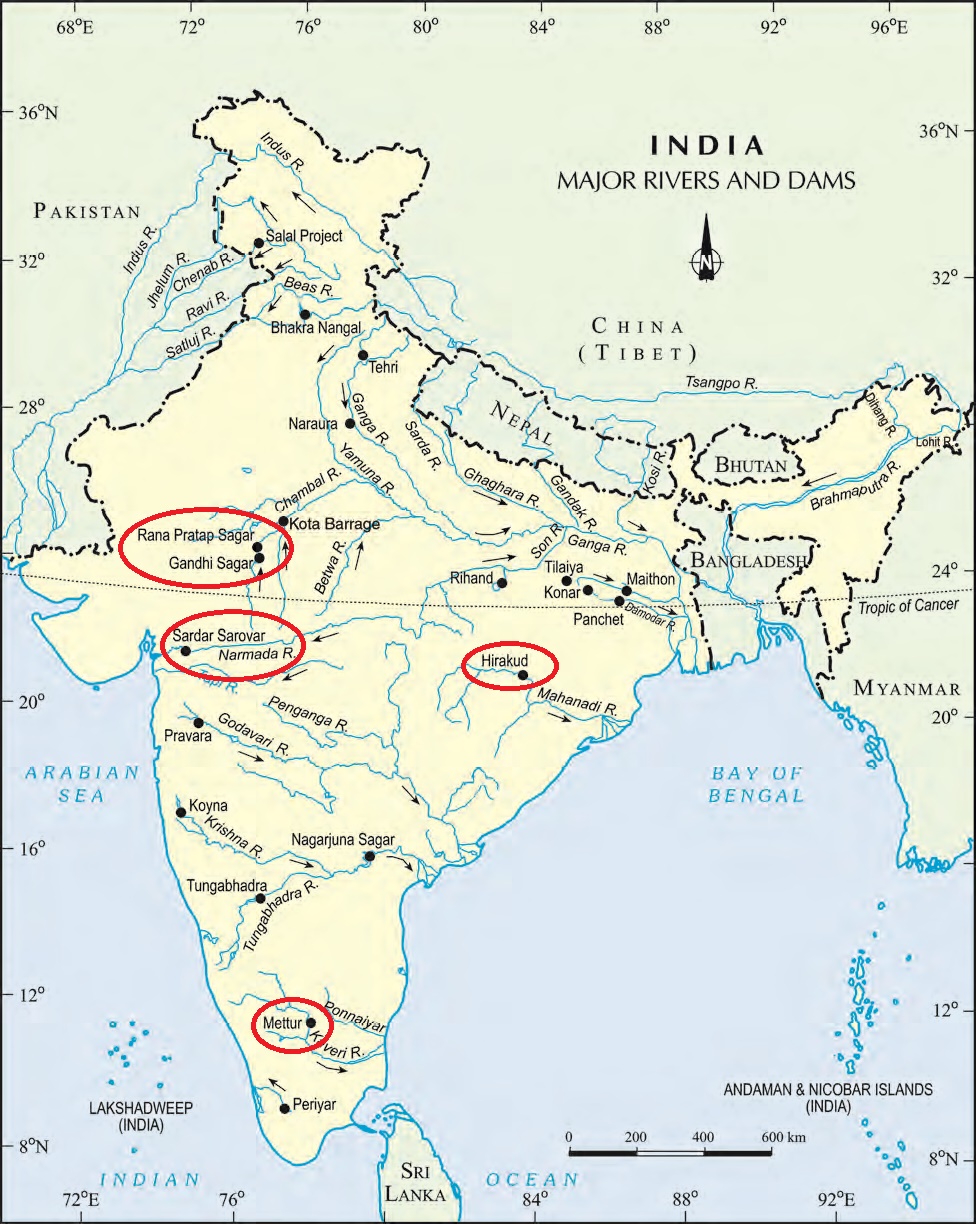
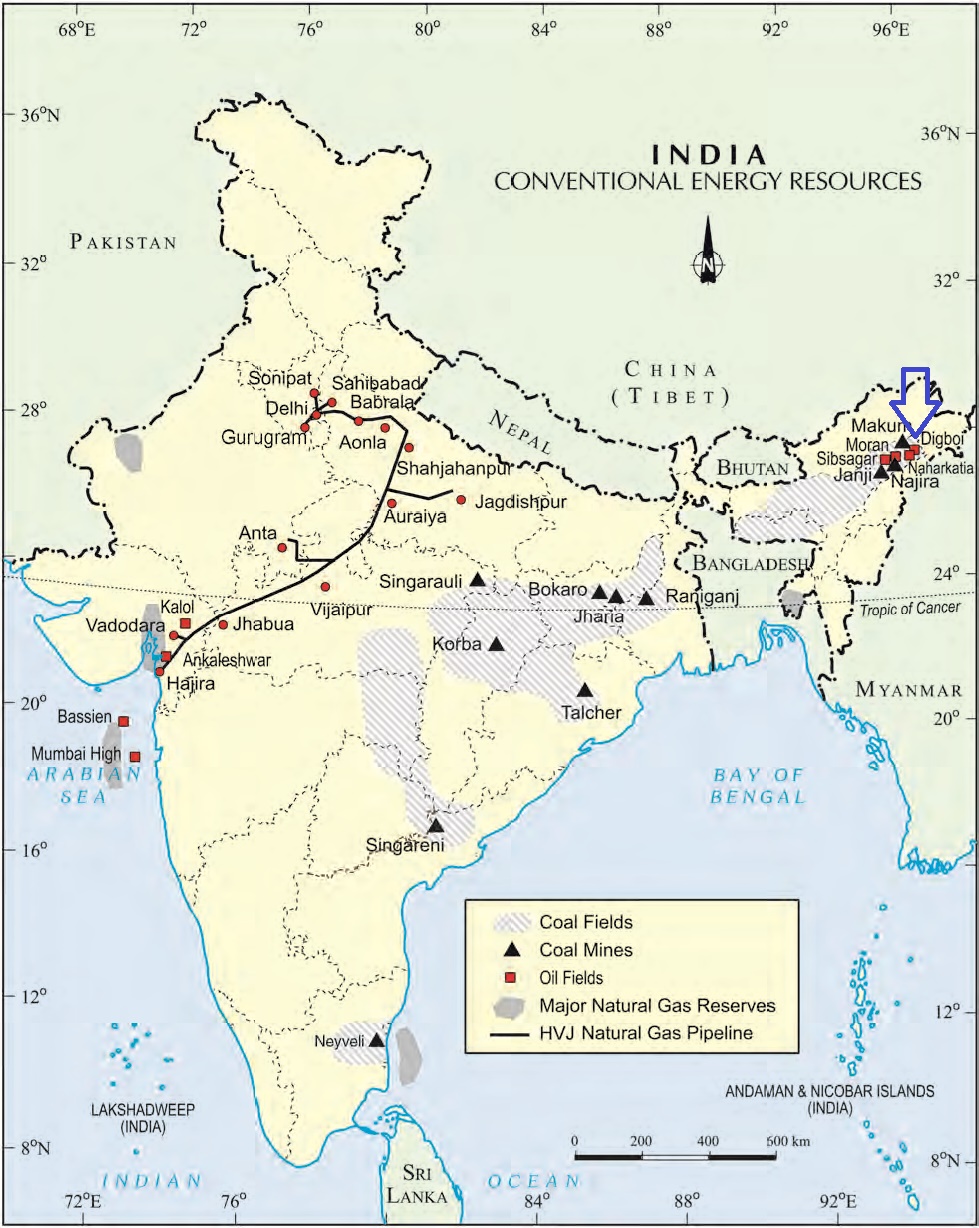
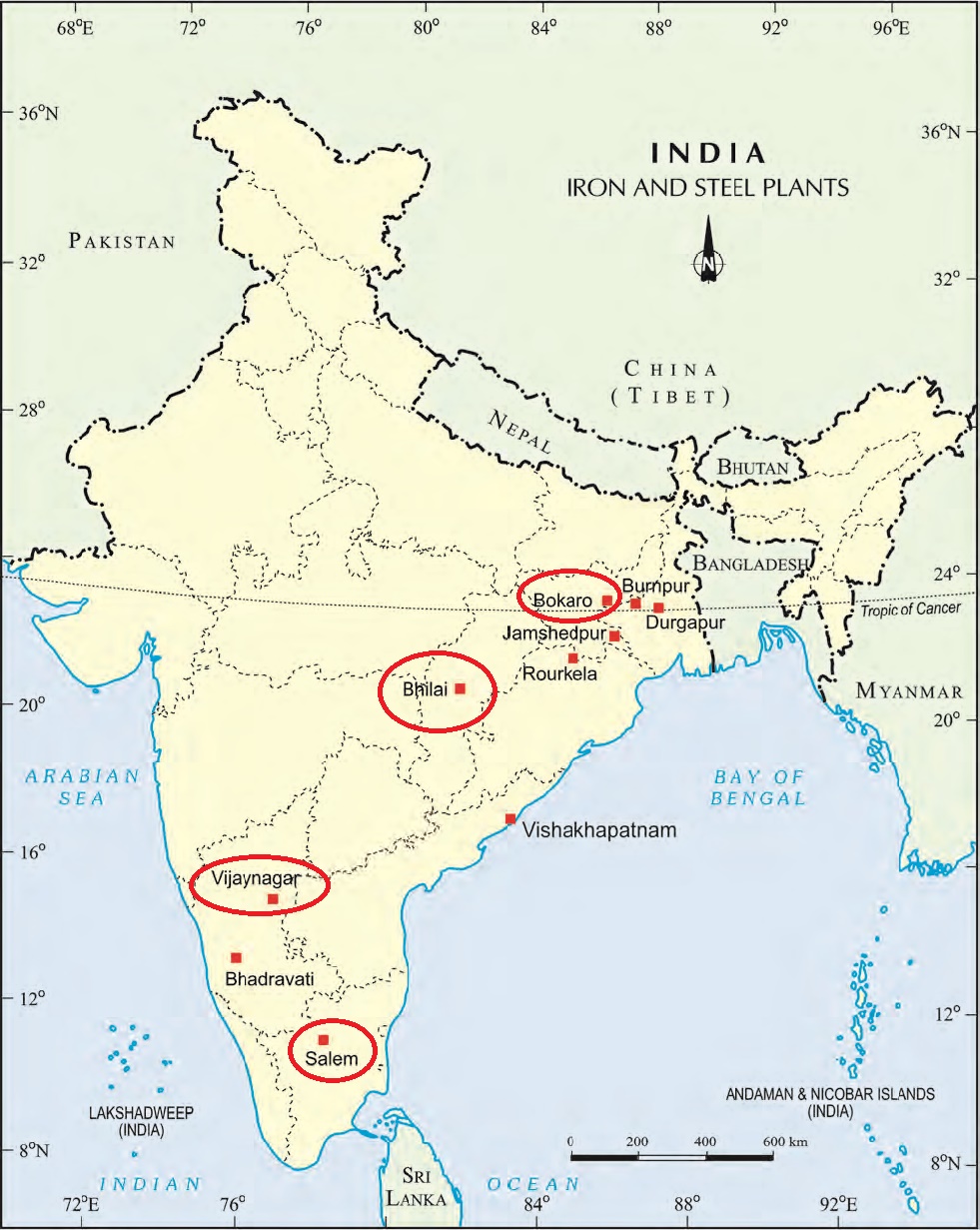
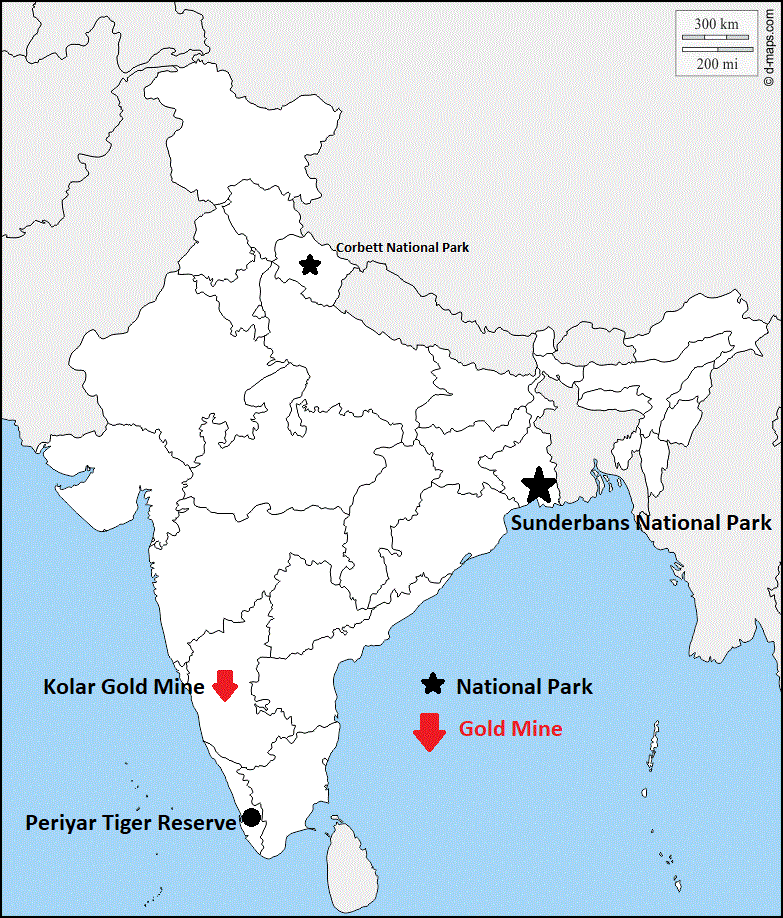
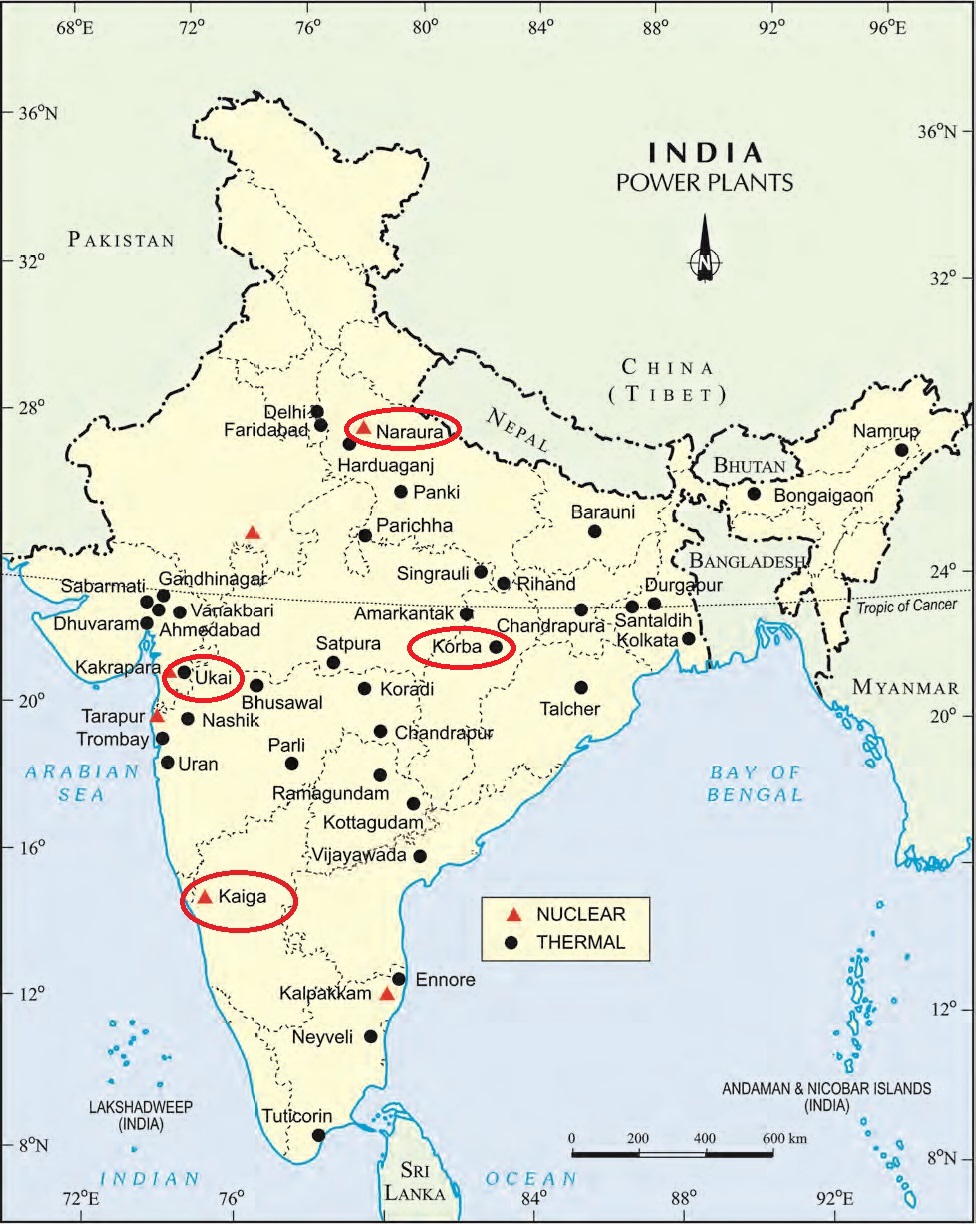
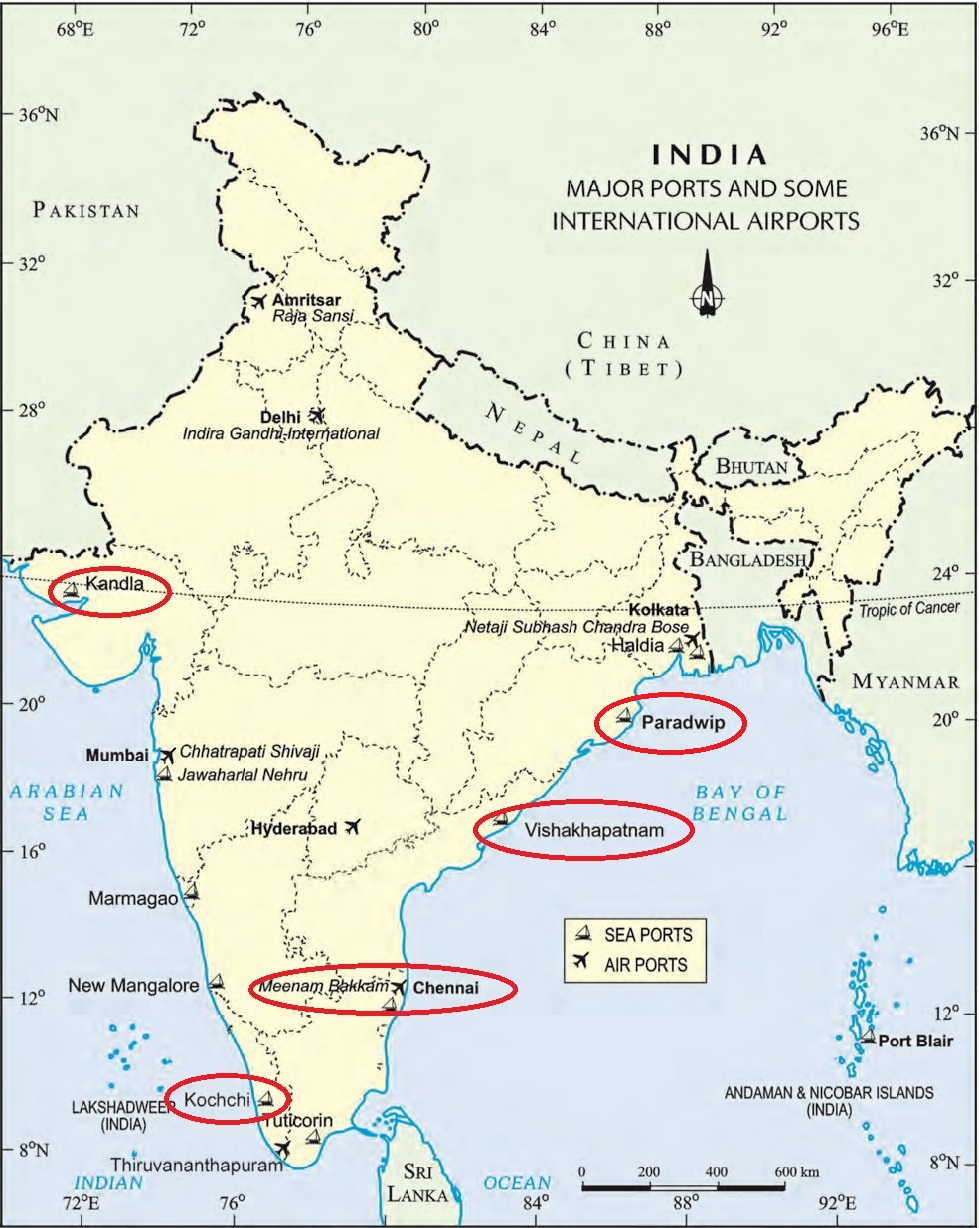 Kaiga
Kaiga
all those things which are composed of Non-liveing things are said to be. 1
In India land under a variety of relief features, about how much land area is plains? 1
what is the second name of ‘REGUR’ soil known? 1
(a) Laterite Soil
(b) Black Soil
(c) Alluvial Soil
(d) Saline Soil
Which one of the following is the main cause of land defradation in Punjab? 1
(a) Intensive cultivation
(b) Deforestation
(c) Over irrigation
(d) Over grazing
Which one of the following is a leguminous crop?
(a) Pulses
(b) Jowar
(c) Millets
(d) Sesame
In 2019-2013 what is the ranking of India in Worlds Production of Natural Rubber?
(a) Second
(b) Fifth
(c) Fourth
(d) Sixth
Which one of the following town is the electronic capital of India?
(a) Mumbai
(b) Kolkata
(c) Pune
(d)Bengaluru
Which is a riverine port?
(a) Kandla
(b) Mumbai
(c) Kolkata
(d) Cochin
Which mode of transportation reduces trans-shipment losses and delays?
(a) Railways
(b) Roadways
(c) Pipelines
(d) Waterways
Which of the following industries uses limestone as a raw material?
(a) Aluminium
(b) Cement
(c) Sugar
(d) Jute
‘Tuticorin Port’ is at which place out of the following?
(a) Tamil Nadu
(b) Assam
(c) Orissa
(d) Maharashtra
Is Chennai one of the Oldest Port of India? ( Yes/No )
What we call a trade between two countries? 1
In which state Bhilai Steel Plant is located?
Does the first Cement industry established in 1904 at Chennai? ( Yes/No )
on the basis of origin tell two names of resources. 2
How do industries pollute the environment? 3
What is Resource? Describe soil resource. 5
Prepresent the following on the outline map of country india?
- sardar sarovar dam
- Tapti River
- River Mahanadi
- Vishakhapatnam sea port
- Mumbai air port